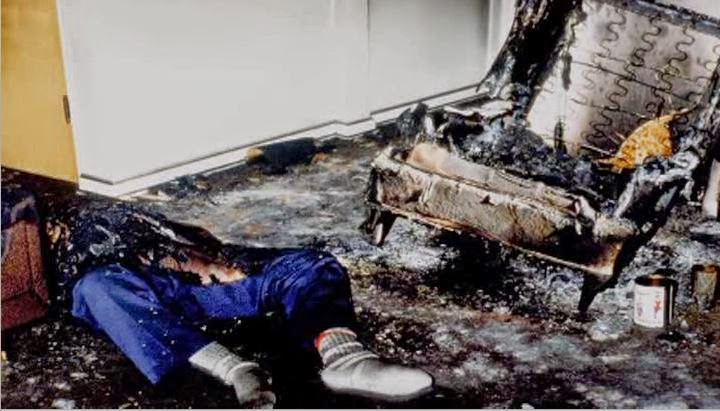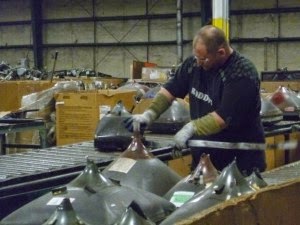Experts’ Failure to Eliminate all Potential Ignition Sources Results in
Overturned Arson and Fraud Convictions in New York
We
reported few months ago of the false fire investigations performed by fire
investigators. Here is the link to that
report.
LACK OF SCIENCE IS BEHIND MANY FALSE ARSON CAUSE AND
ORIGIN INVESTIGATIONS
Arson
investigation, unfortunately, is a field where junk science has been the rule
rather than the exception. A large body
of cause-and-effect mythology has developed in fire investigations over the
years. As far back as 30 years ago we
have been arguing that the opinions stated by many fire investigators were not
based on science and they were in fact false.
Due to these faulty opinions, many people were convicted of arson and
many people lost their home and their livelihood. Some people have allegedly been put to death
having been convicted of arson, based on the same old cause-and-effect
mythology. Through
the 1980s, proponents (including ourselves) of a science-based approach to
arson investigations waged an uphill battle, finally winning a major victory in
1992 when the National Fire Protection Association (NFPA) published its Guide
for Fire and Explosion Investigations (NFPA 921). NFPA 921 would subsequently become the bible
in fire and arson investigations.
Prior to NFPA 921, the fundamental principles for
determining the causes of fires did not involve science per se, but rather
experience-based hypotheses that were not tested to determine their validity. This process, known as “negative corpus,”
relied on a process of elimination rather than supporting evidence or
scientifically supported conclusions, and some investigators feared that a
science-based approach would establish criteria of proof that would be too
difficult to meet. So, they fought NFPA
921.
The Daubert v.
Merrell Dow Pharmaceuticals decision was handed down in 1993, where the
U.S. Supreme Court made judges the gatekeepers of expert testimony. The ruling said that judges have to determine
if expert testimony is reliable, and that using a methodology that has been
peer reviewed, published, and accepted was part of that reliability test. So in cases that included fire
investigations, courts began gravitating towards NFPA 921, a consensus document
from a group of leaders in the fire investigation community. The U.S. courts began referring to NFPA 921
as the “standard of care” for evaluating expert testimony regarding fire
investigations.
An organization called the Innocence Project [which
works to exonerate the wrongfully convicted] has taken an interest in arson
cases. They are going back and
evaluating the science or lack thereof in investigations and comparing it with
what’s available today. They estimate
that between 200 and 400 individuals may have been wrongly convicted of arson
based on false evidence and false expert testimony using non-scientific methods.
We are also
very gratified to see state legislatures now trying to reverse some of the
wrongs committed over the years as a result of these false opinions and
wrongful convictions. In this blog lack
of validity of common myths is reviewed, and new forensic engineering analysis
techniques discussed consistent with the NFPA 921.
As a further proof of our
report, we previde below a case from New York where a person was convicted
based on this faulty fire investigation.
In
the case of The People of the State of New York v. James Richardson,
—N.Y.S.2d -, 2008 WL 442 5918 (N.Y.A.D. Third Dept.)(October 2, 2008); the
Supreme Court, Appellate Division, Third Department, New York, reversed
convictions of arson in the third degree and insurance fraud in the third
degree having concluded that the jury verdicts were not supported by the weight
of the evidence. The standard on review required the Court to independently
review the evidence and make a determination of whether the evidence was “of
such weight and credibility as to convince [the Court] that the jury was
justified in finding the defendant guilty beyond a reasonable doubt.” Id.
at *3.
On
February 15, 2007, the defendant’s home was involved in a fire which caused
severe damage, particularly to the kitchen area of the property. The fire was
discovered approximately two hours after the defendant had left the premises
and it was undisputed that the defendant had sole access to the property. Two
arson investigators concluded that the fire originated in the kitchen where a
space heater, refrigerator, stove, microwave, water cooler, and outside light
were all plugged into and powered by a single electrical outlet through the use
of a power strip. Both investigators testified that they ruled out all
accidental causes. Moreover, a laboratory report confirmed the presence of a
medium petroleum distillate on a portion of the baseboard where the fire
originated.
However,
both fire investigators, one being trained just five months prior to the fire
and employed by the City of Albany Fire Department, and the other having been
retained by the defendant’s insurance company, admitted that they were unable
to pinpoint the actual cause of the fire. Further, and critical to the Court,
was the fact that while the experts claimed to have eliminated the possibility
of mechanical sources as the cause of the fire, neither had the majority of the
kitchen appliances inspected, all of which were grouped together in the same
area of the small, compact kitchen. Further, the investigators noticed three
tripped circuit breakers, indicating a possible circuit overload, but did not
determine the reason for the breakers’ failure or even determine with which
appliances they were associated. Rather, the Court criticized, one of the
investigators relied on an expert report issued by an engineer specializing in
failure analysis who examined the space heater, the electrical outlet, power
strip and the remains of several electrical wires, but who failed to examine
the scene, investigate the tripped circuit breakers or examine the remaining
electrical appliances in close proximity to the fire’s origin.
Further,
the Court found of equal importance that the defendant had testified that he
was in the process of repainting the kitchen at the time of the fire and also
stored charcoal lighter fluid in a box near the space heater. In fact, cans of
paint were discovered in the kitchen in the fire debris, most of which spilled
during the fire department’s efforts to extinguish the fire. Thus, while
investigators testified as to the presence of medium petroleum
distillate—examples of which include paint thinner and some brands of charcoal
lighter fluid—neither identified the specific distillate found on the baseboard
and neither provided “unequivocal testimony” excluding paint thinner,
turpentine or charcoal lighter fluid as the source of the distillate. The Court
was also troubled by the fact that testing of a burn pattern on the floor was
negative for the presence of ignitable fluids. the Court did not
discuss the possibility or likelihood that a distillate may be consumed during
a fire such that no residue is detected; it was not clear whether this was
raised at trial.
The
opinion, however, was a divided one and Judge Carpinello and Presiding Judge
Cardona dissented. The dissenters noted that on appeal that the Court could not
evaluate the demeanor of the defendant while testifying at trial. The dissent
further noted that there was no sign of forced entry at the property and
stressed the fact that two certified fire investigators did eliminate
all accidental causes of the fire based on their physical inspection of the
premises.
In
discussing particular evidence in the case, the dissent took exception to the
majority’s conclusion that the experts did not “reasonably” exclude the
possibility of an electrical fire and pointed to the following: (1) the precise
origin identified by a “v-pattern” on the wall was in the corner of the
kitchen, near the stove; (2) none of the appliances referred to by the majority
were at the base of that “v-pattern”; (3) the stove and refrigerator were
examined and eliminated as potential sources; (4) the tripped circuit breakers
may simply have been tripped due to the heat of the fire; (5) the baseboard at
the origin of the fire tested positive for medium petroleum distillate; (6)
there was an unusual burn pattern on the floor consistent with a liquid burning
across the floor surface; and (7) an engineering examination of the electric
heater as well as statements from the defendant eliminated it as the cause of
the fire.
While
the Court’s opinion makes no mention of NFPA 921 Guide for Fire &
Explosion Investigations, it demonstrates that it is critical for arson
investigators to eliminate all potential causes of fire before
concluding that a fire is incendiary. In fact, in this case, the experts’
failure to examine and eliminate certain potential ignition sources in the area
of origin was pivotal in overturning the defendant’s convictions.





%2BIrregular%2BBurn%2BPatterns%2Bon%2Ba%2BFloor%2Bof%2Ba%2BRoom%2BBurned%2Bin%2Ba%2BTest%2BFire%2Bin%2BWhich%2BNo%2BIgnitible%2BLiquids%2BWere%2BUsed..jpg)










